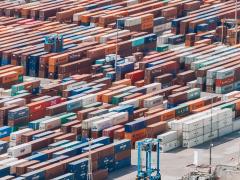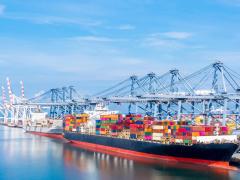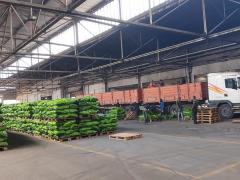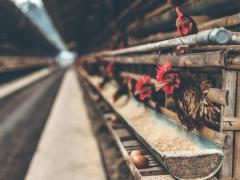Walvis Bay Stevedoring is stepping up its game with significant investments in equipment, workforce development and forward-thinking solutions. According to general manager Ian Foster, the growing activity at the Port of Walvis Bay – driven by rising cargo volumes and a diversification of freight – has prompted the company to adapt quickly to maintain its competitive edge.“We’ve witnessed significant changes over the past year, not just in the volume of cargo handled, but also in the variety of commodities moving through the port,” Foster told Freight News. “Fertiliser, for example, was previously unheard of in our operations. Yet in the last season alone, we handled over 200 000 tons.”This shift has been largely driven by regional supply chain disruptions, which have led to the rerouting of cargo traditionally processed through other southern African ports.“In response, we’ve expanded our workforce and invested considerable effort in training and specialisation,” said Foster. “With only three licensed stevedoring companies currently operating in the port – and no indication of new licences being issued – there’s significant pressure on us to perform at the highest standard.”“One of the major challenges we’re currently facing at the port is the lack of available warehousing space,” said Foster. “To overcome this, we’ve implemented a quayside bagging system. Ideally, cargo would be discharged in bulk directly into a warehouse, which is far more efficient, but given the constraints, we’ve had to introduce innovative, on-the-spot solutions.”The system, which involves discharging cargo directly from the ship into a mobile bagging plant on the quay, has enabled the company to maintain throughput targets of around 3 000 tons per day.Foster said the company was actively scaling up its bulk cargo capabilities. “We often exceed our current daily target of 3 000 tons, but that’s our benchmark. Our goal is to handle 55 000 tons within seven days to turn vessels around as quickly as possible.” He said sulphur was increasingly being routed through Walvis Bay, destined for markets in the Democratic Republic of Congo (DRC) and Zambia, while copper exports from those countries were making their way back through the port.“Our main competitor right now is Dar es Salaam,” said Foster. “One of our biggest limitations is the lack of direct rail connectivity. The railway only runs as far as Grootfontein; beyond that, there’s no link into Zambia, so all cargo has to move by road.”As a result, Walvis Bay Stevedoring has had to adapt its operations by stockpiling cargo to ensure a steady f low, despite the logistical challenges. “It’s not ideal, but until more infrastructure is in place, it’s how we’re keeping cargo moving.”Historically, bulk operations at the port were minimal. “Traditionally, we only handled wheat, and even that was seasonal, largely dependent on drought conditions elsewhere,” said Foster. “A year ago, we operated only one hopper. Then demand surged and we brought in a second one. That was still not enough and so now a third and fourth hopper are on the way.”The new equipment has significantly increased the port’s handling capacity. “For wheat, it’s a one-way f low, straight to the warehouse and onto transporters. But as volumes and commodities diversify, we’re constantly adjusting our setup to stay ahead of demand.” LV












